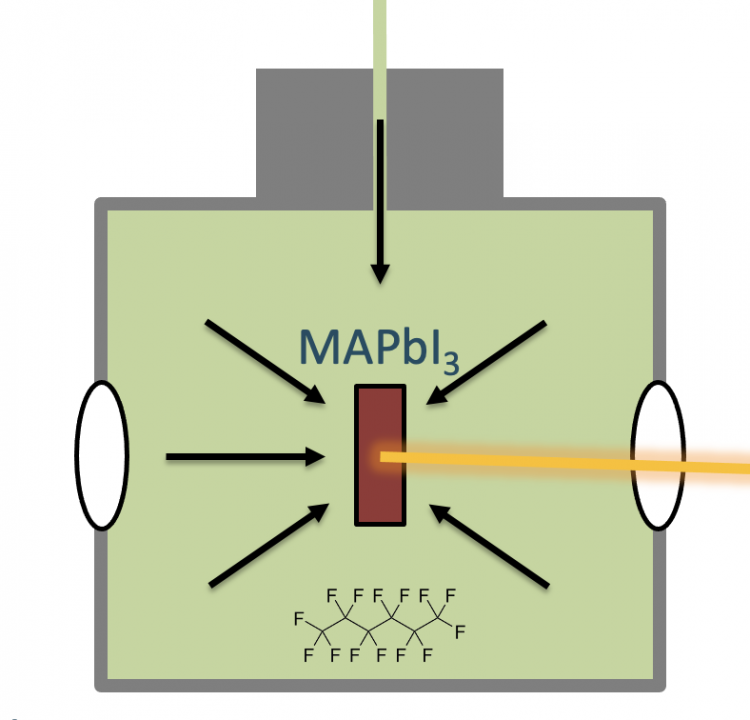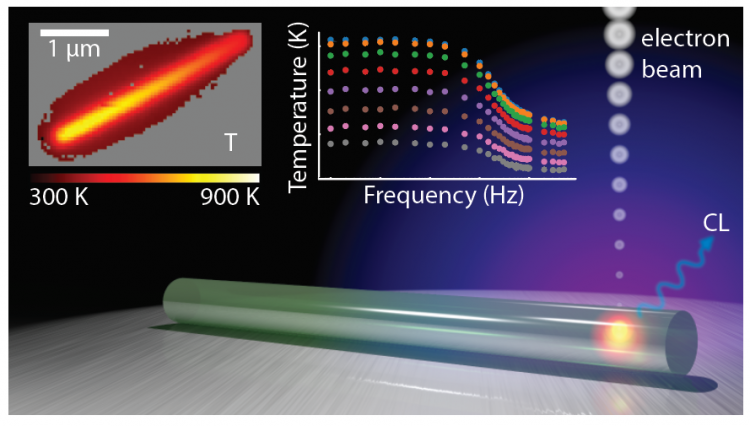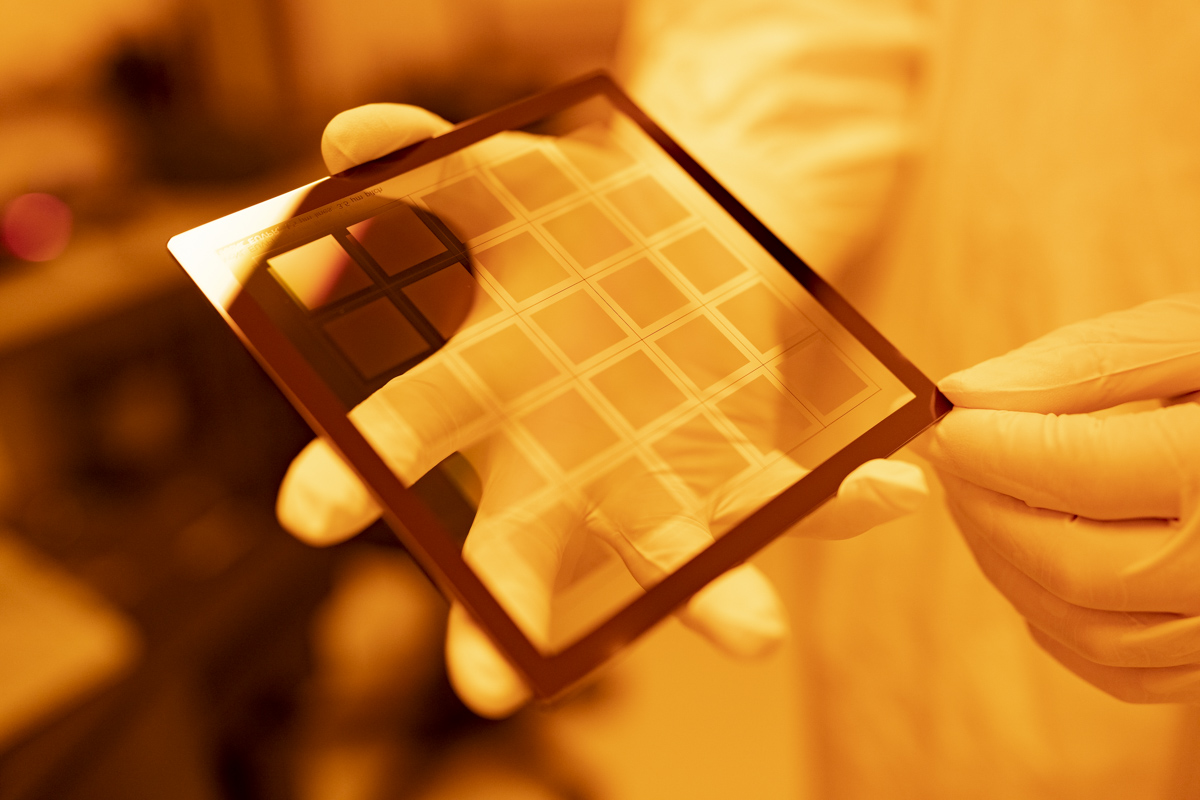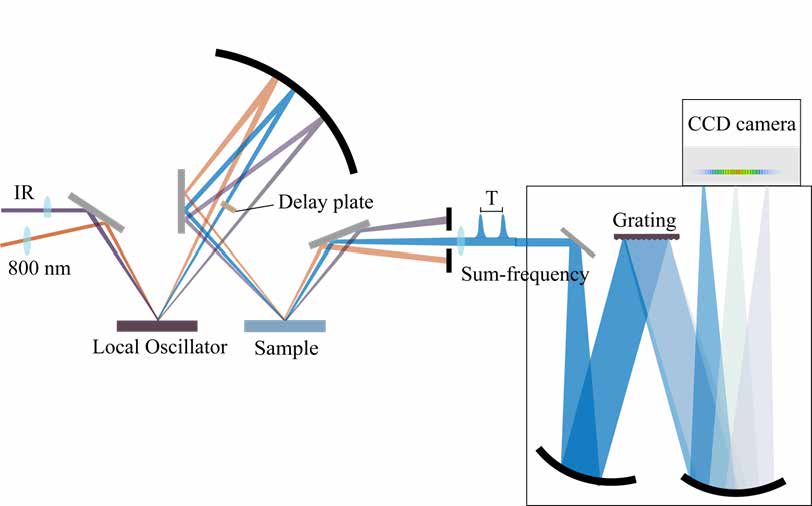Materials analysis and spectroscopy

Cathodoluminescence spectroscopy
Group: Photonic Materials
We carry out angle-, polarisation, and time-resolved cathodoluminescence spectroscopy in a 30 keV SEM to probe optical properties at the nanoscale.
Potential applications
- High spatial-resolution mapping of optical properties of materials
- Probing photon emission correlations in quantum materials
Reference
N.J. Schilder, H. Agrawal, E.C. Garnett and A. Polman, Phase-Resolved Surface Plasmon Scattering Probed by Cathodoluminescence Holography, ACS Photonics 7, 6: 1476-1482 (2020)
K-space microscopy of nano-objects
Group: Resonant Nanophotonics
We developed fully phase- and polarisation resolved high-NA measurements of radiation patterns of single nano-objects. This can be exploited for metrology and near-field imaging: detecting nanometer near-field geometries by radiation pattern features.
Potential applications
- Wafer metrology
- Near field imaging
- Fluorescence nanoscopy
Reference
R. Röhrich, C. Hoekmeijer, C.I. Osorio and A.F. Koenderink, Quantifying single plasmonic nanostructure far -fields with interferometric and polarimetric k-space microscopy, Light : Sci. Appl. 7, 65: 1-11 (2018)
Nonlinear spectroscopy of liquids and surfaces
Group: Ultrafast Spectroscopy
We develop and use advanced laser-based spectroscopic techniques to study the molecular-scale structure and dynamics of (aqueous) solutions and surfaces. We can measure the vibrational spectrum and orientation of molecules at surfaces with molecular-scale (sub-nanometer) depth resolution.
Potential applications
- Study of the molecular-scale properties of liquid and solid surfaces, like two- or three-component mixtures and coatings
Reference
K. Meister, C.J. Moll, S. Chakraborty, B. Jana, A.L. DeVries, H. Ramløv and H.J. Bakker, Molecular structure of a hyperactive antifreeze protein adsorbed to ice, J. Chem. Phys. 150, 13: 131101: 1-5 (2019)
Pressure-dependent measurements of optoelectronic materials
Group: Hybrid Solar Cells
We study semiconductors under hydrostatic pressure up to 400 MPa. We measure absorption, photoluminescence, time-resolved absorption and photoluminescence and electrical measurements under pressure. Thereby we study how the changes in atomic distances influence properties relevant for applications.
Potential applications
- Study optical material properties under pressure
- Measure the response of electrical devices under mechanical load

Self-assembly
Group: Self-Organizing Matter
The research focuses on the dynamic interplay between chemical reactions and crystallization phenomena to control the emergence of complexity in the solid state. In particular, the group aims to design physical-chemical schemes to self-organize microscale devices and functional materials.
Potential applications
- Functional nano composites
- Catalysis
- Photovoltaics
Reference
L. Helmbrecht, M.H. Futscher, L.A. Muscarella, B. Ehrler and W.L. Noorduin, Ion Exchange Lithography: Localized Ion Exchange Reactions for Spatial Patterning of Perovskite Semiconductors and Insulators, Adv. Mater., 2005291: 1-6 (2021)
Time-resolved cathodoluminescence spectroscopy
Group: Photonic Materials

We developed an ultrafast SEM-CL microscope with ps electron pulses made by laser-induced photoemission. It can be used for pump-probe CL microscopy.
Potential applications
- Study ultrafast excitation and relaxations in materials at high spatial resolution
- Nanoscale thermometry
- Nanoscale measurements of thermal conductivity
Reference
Kelly W. Mauser, Magdalena Solà-Garcia, Matthias Liebtrau, Benjamin Damilano, Pierre-Marie Coulon, Stéphane Vézian, Philip Shields, Sophie Meuret, Albert Polman, Probing nanoscale thermal transport with cathodoluminescence thermometry, arXiv:2012.14890v1 [cond-mat.mes-hall]



